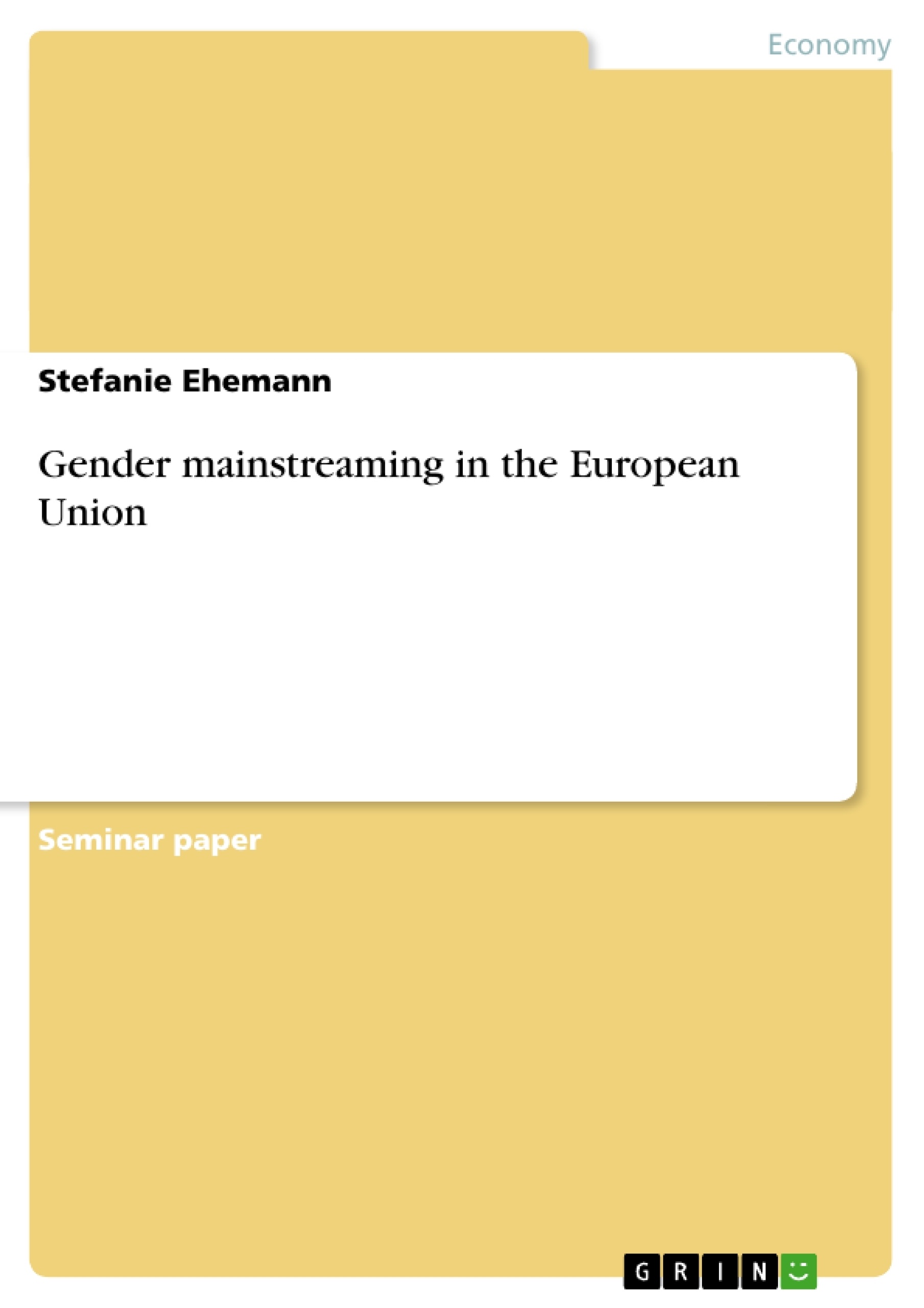The European Union is coming closer together and women such as Angela Merkel, the Federal Chancellor of Germany, play ever more important roles in the definition of European policy. Furthermore, the European gender-policies have been reaching importance since the Fourth International Conference on Women in Beijing.
Strive for equal rights mirrors the composition of the European Parliament, where women are becoming more prominent, but not yet as prominent as men. Additionally not only women as politicians develop since the emergence of gender mainstreaming. This political strategy comprises the behavior of politicians, the behavior of the society whether they go voting or not and finally the economy, also regarded from both sides – the employer and the employee.
It always was and still is a long and exhausting struggle for women in politics and the economy to be taken seriously. Although women obtain a high profile they often do not reach the same important positions as men do. As we can see in the European Commission - there are eight women and 19 men. Men represent hereby the most important departments.
Due to those facts the thesis of this term paper is: “Due to the modern European policy concerning the gender mainstreaming women are not yet equal players in the economical and political system of the European Union”.
This paper aims to show the development as well as the current situation of women in the economy as well as in European politics. Women indeed reach higher level positions in the European politics and large enterprises nowadays and they also have almost the same rights as men have in Western Europe. But they still cannot reach the same degree of responsibility as their male colleagues do. In some areas of politics as well as business the emancipation is already quite sophisticated. Although in Germany we have a woman as a chancellor, there are still a higher number of men dominating economy and politics.
Inhaltsverzeichnis (Table of Contents)
- Introduction
- Important Definitions
- Definition of gender
- Definition of mainstreaming
- Definition and origins of the gender mainstreaming
- The Development of gender mainstreaming in European policy
- Gender mainstreaming and the European Union
- The development of women's politics
- Women in the European Constitution
- Gender gaps in the European Union
- Gender gaps in the economy
- Gender gaps in voting
- Conclusion
Zielsetzung und Themenschwerpunkte (Objectives and Key Themes)
This term paper aims to explore the progress and current situation of women in the European Union's economic and political systems, analyzing the impact of gender mainstreaming policies. It examines whether women have achieved equal footing with men in these spheres despite the implementation of these policies.
- The development of gender mainstreaming in European policy and its implementation.
- The role of women in European politics and the representation of women in the European Parliament.
- The presence of gender gaps in the European economy, specifically focusing on women's participation and leadership roles.
- The implications of gender mainstreaming on women's political and economic participation.
- The impact of gender mainstreaming on women's overall equality in the European Union.
Zusammenfassung der Kapitel (Chapter Summaries)
- Introduction: The introduction sets the stage for the term paper by highlighting the increasing visibility of women in European policy, particularly with the rise of prominent figures like Angela Merkel. It underscores the growing significance of European gender policies, particularly since the Fourth International Conference on Women in Beijing. The introduction also outlines the persistent challenges women face in achieving true equality in politics and the economy, despite progress in certain areas. The author emphasizes the importance of examining the current situation and assessing whether women truly have equal opportunities in the European Union.
- Important Definitions: This chapter provides crucial definitions of key concepts related to gender and gender mainstreaming. It clarifies the distinction between sex and gender, emphasizing the social and cultural constructs that shape gender roles and identities. The chapter also defines mainstreaming as a process that aims to address inequalities and promote equal opportunities for all genders. The origin of the gender mainstreaming strategy is traced back to the worldwide feminist movement and its impact on international conferences on women.
- The Development of gender mainstreaming in European policy: This chapter delves into the history of gender mainstreaming in European policy. It examines the role of the European Union in promoting gender equality and highlights the development of women's politics within the EU framework. The chapter also explores the integration of gender equality principles into the European Constitution and the evolution of policy initiatives aimed at promoting equal opportunities for women and men.
- Gender gaps in the European Union: This chapter focuses on the persistent gender gaps that remain in the European Union. It analyzes the economic and political disparities between women and men, examining areas such as women's participation in the workforce and their representation in leadership roles. The chapter explores the factors contributing to these gaps and discusses the implications for achieving true gender equality in the European Union.
Schlüsselwörter (Keywords)
The primary keywords and focus topics of this term paper include gender mainstreaming, gender equality, women in politics, women in the economy, European Union policy, gender gaps, equal opportunities, and the impact of feminist movements on global policy.
- Quote paper
- Stefanie Ehemann (Author), 2007, Gender mainstreaming in the European Union, Munich, GRIN Verlag, https://www.grin.com/document/83422



